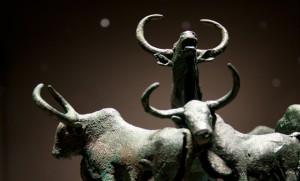翠鸟的生存
- 2020年10月30日

刚才看到一只翠鸟,忽然想把维基上看过的这段(普通)翠鸟的存活状况翻译一下:
生存
刚换羽的幼鸟头几日异常凶险。离巢约四天,它首次入水时,会因羽毛浸水而淹死。许多还未学会捕鱼就被父母赶出地盘,前一两个星期,仅半数幸存。多数翠鸟死于饥寒,严冬尤甚。夏季洪水会毁掉鸟巢,或阻碍捕鱼,殃及幼雏。幼鸟只有四分之一能活到来年繁殖季,幸好足以维持种群。成年后,又仅有四分之一能跨两个繁殖季。再往后就几无幸存者。翠鸟的长寿纪录是21岁(注:这只老寿星极幸运了,亚军就只有7.5岁)
题图是我拍的落在一块光秃秃的石头上、无所适从的幼鸟。
维基原文:
The early days for fledged juveniles are more hazardous; during its first dives into the water, about four days after leaving the nest, a fledgling may become waterlogged and drown. Many young will not have learned to fish by the time they are driven out of their parents’ territory, and only about half survive more than a week or two. Most kingfishers die of cold or lack of food, and a severe winter can kill a high percentage of the birds. Summer floods can destroy nests or make fishing difficult, resulting in starvation of the brood. Only a quarter of the young survive to breed the following year, but this is enough to maintain the population. Likewise, only a quarter of adult birds survive from one breeding season to the next. Very few birds live longer than one breeding season. The oldest bird on record was 21 years.
有质疑这些数据的声音——半数、四分之一、又四分之一、等等——是否有坚实的观测数据支撑,“许多”、“多数”是否太主观。起初我几乎同意,但仔细思考后认为原文这些表达站得住脚。翠鸟的种群数量和繁殖能力都有可靠数据。已知它很能生,而整体数量却很稳的话,那它一定也很能死,并且死亡率可以根据这两个数定量倒推。成鸟和幼鸟长相不同,用种群的长幼比例,就可以定量推算每个成长阶段的死亡率。维基引用的资料是个事实总结,不是科学论文,略有瑕疵,但方法论上说,没有极难解释的地方。



